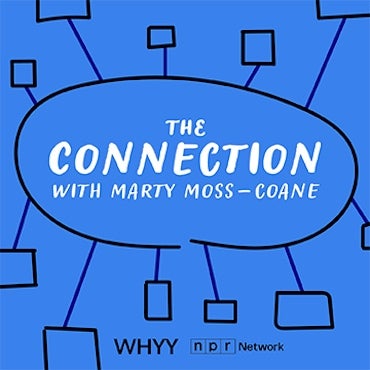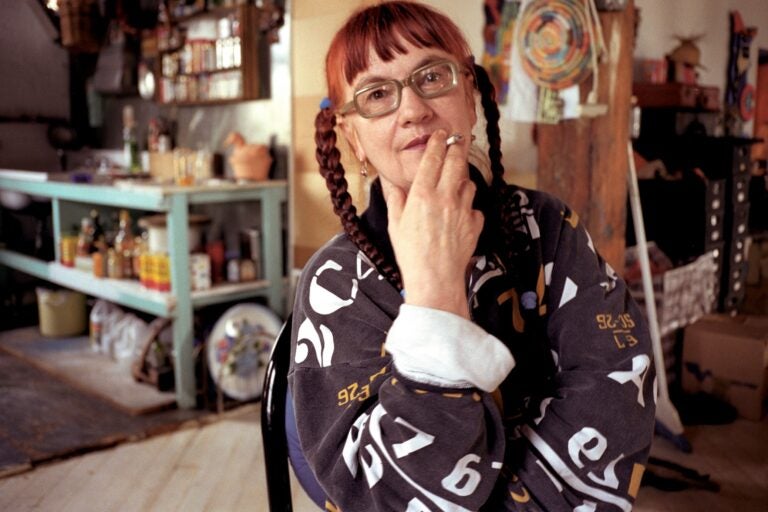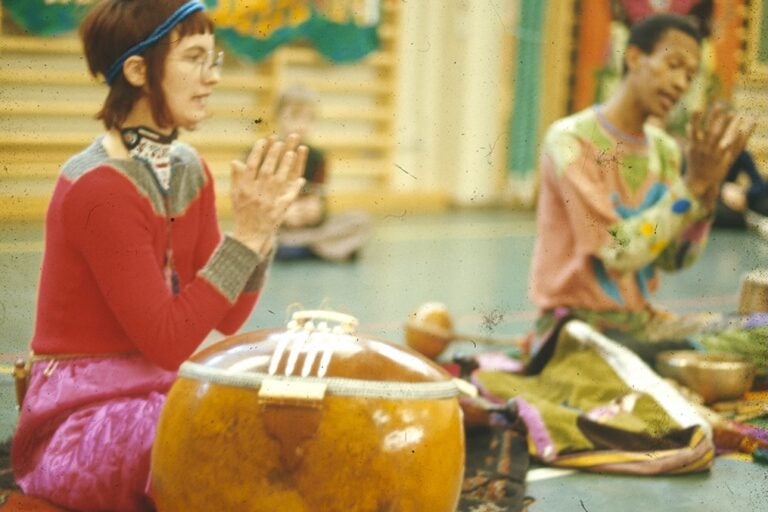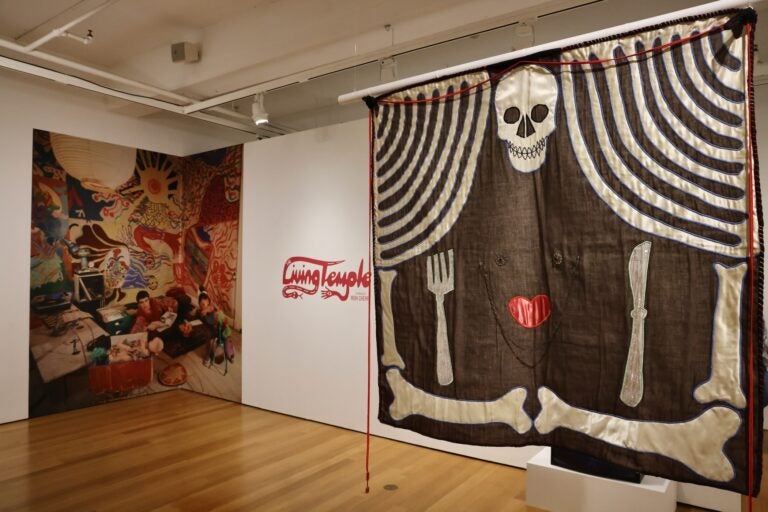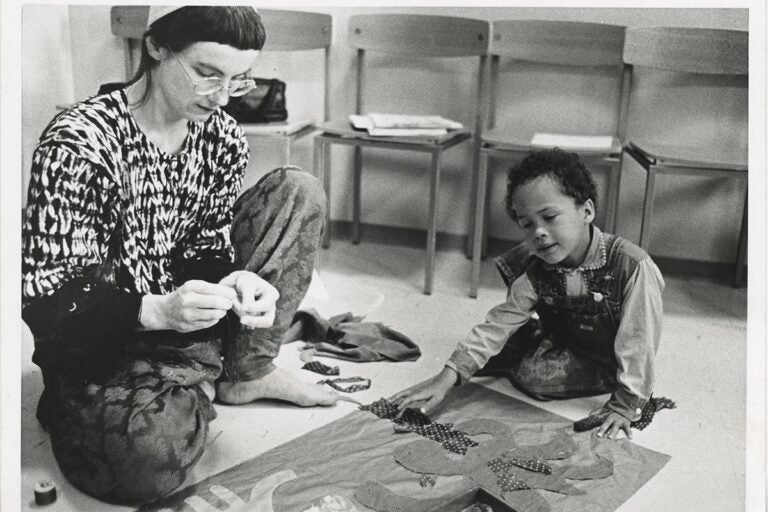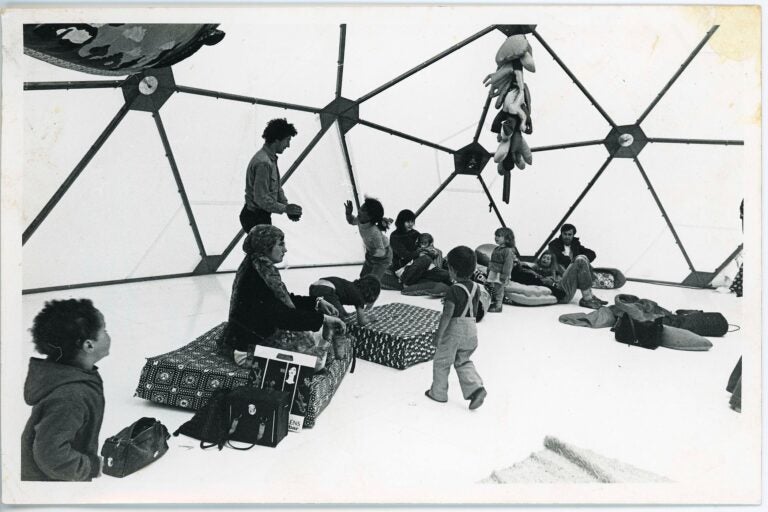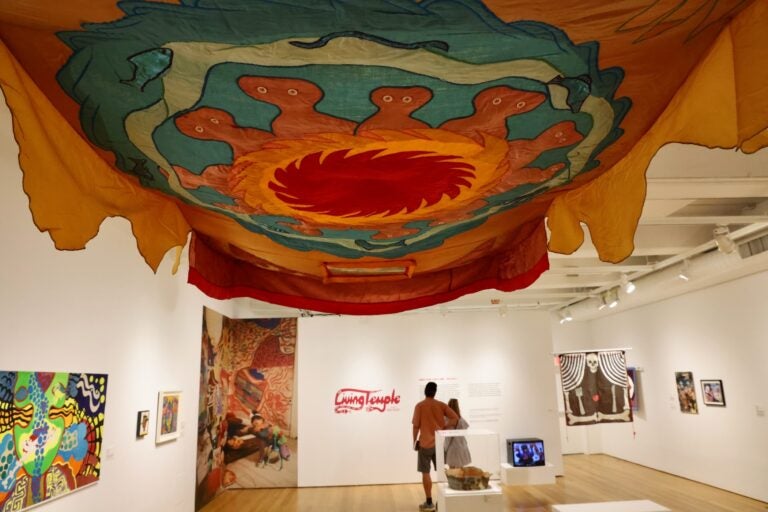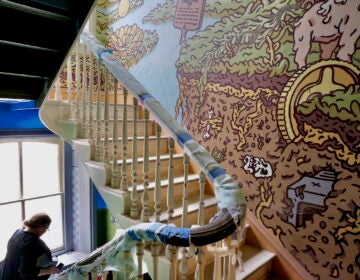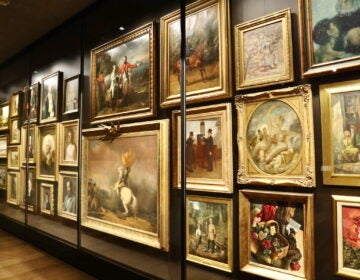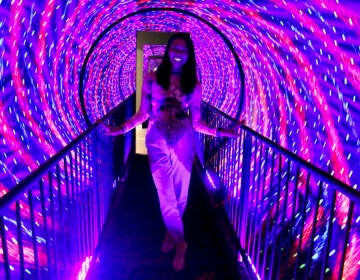Moki Cherry, matriarch of a musical family, gets the spotlight at Philadelphia’s Fabric Museum
Neneh Cherry visited the posthumous solo exhibition of her mother, Moki, at the Fabric Workshop and Museum.
From Philly and the Pa. suburbs to South Jersey and Delaware, what would you like WHYY News to cover? Let us know!
For Moki Cherry, raising children did not get in the way of making art. The two became the same.
In 1962, Monica “Moki” Karlsson enrolled at the Beckman College of Design in Stockholm, Sweden, to study fashion design. There she met a Sierra Leonean musician and engineer with whom she had a daughter, Neneh, who would grow up to be a pop and hip-hop star of the 1990s, launched by her song “Buffalo Stance.”
Shortly after Neneh’s birth, her mother became the life partner of the American jazz trumpeter Don Cherry, with whom she had a son, Eagle-Eye, who, like his sister, would become a musician, known for the song “Save Tonight.”
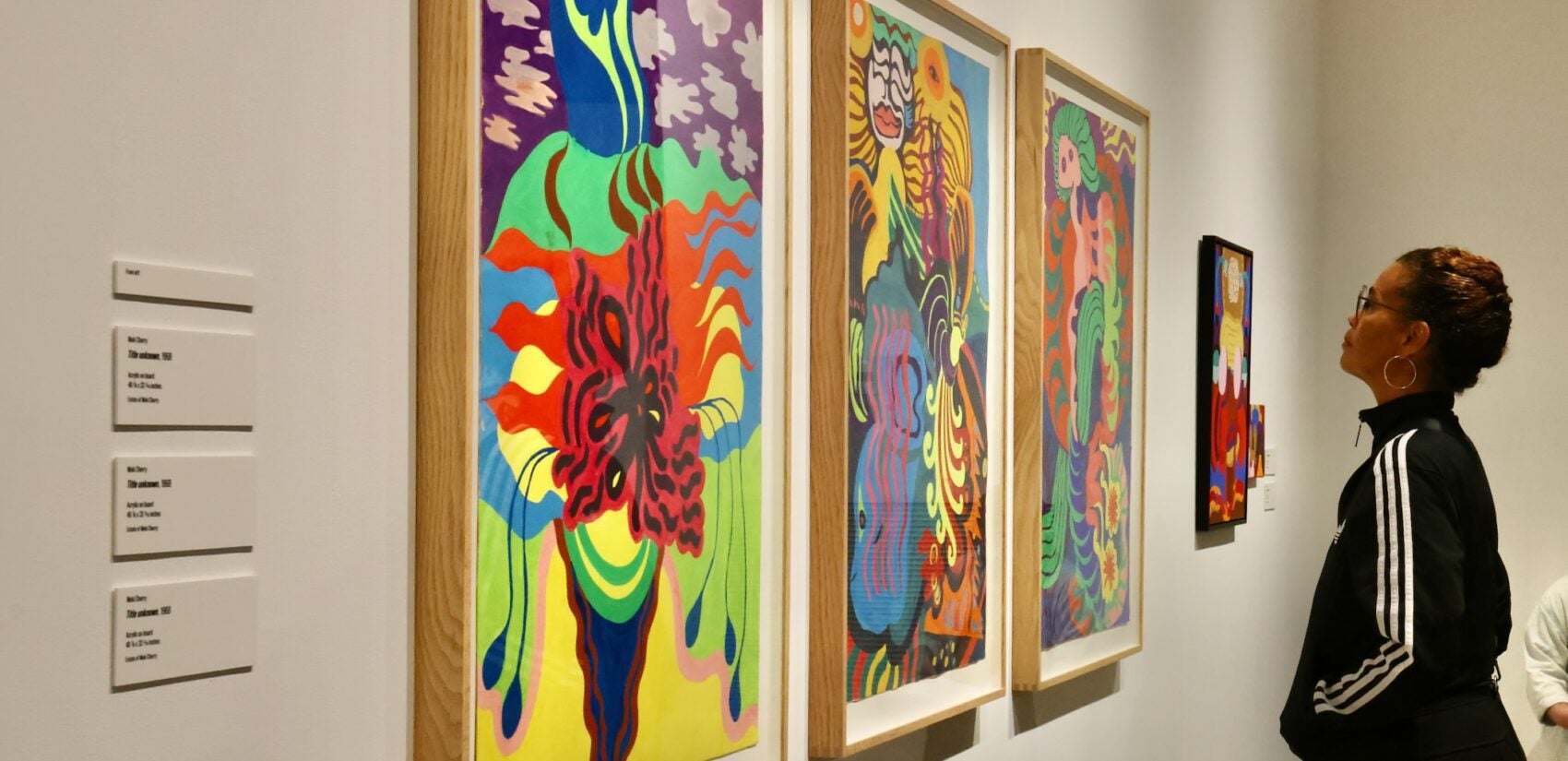
The posthumous solo exhibition “The Living Temple: The World of Moki Cherry,” now at the Fabric Work Workshop and Museum, highlights how Moki’s artistic ambitions melded with her domestic family life.
Over one of the gallery entrances is the colorful patchwork canopy Moki made to drape over the bed of her son. There is a blown-up picture of a young Neneh bouncing on a hobby horse wearing a homemade crocheted dress while her mother pours over papers on the couch, the wall behind her covered in patterned paintings.
“Moki worked and lived in the spaces that were also the spaces I grew up in,” Neneh said on a recent visit to the exhibition. “But what’s really powerful about walking into this is how contemporary the work is, how vibrant it is. She was making art to be seen. She was a serious artist.”
While Moki’s partner and children achieved more popular acclaim, she was active all her life with New York City’s underground art galleries and performance art collectives. As part of “The Living Temple,” the Fabric Workshop sourced a textile pattern sample Moki had designed but could never get fabricated and printed limited edition yardage out of it. Pillows with the green and blue pattern of snakes and vines are available in the gift shop, along with rolls by the yard.
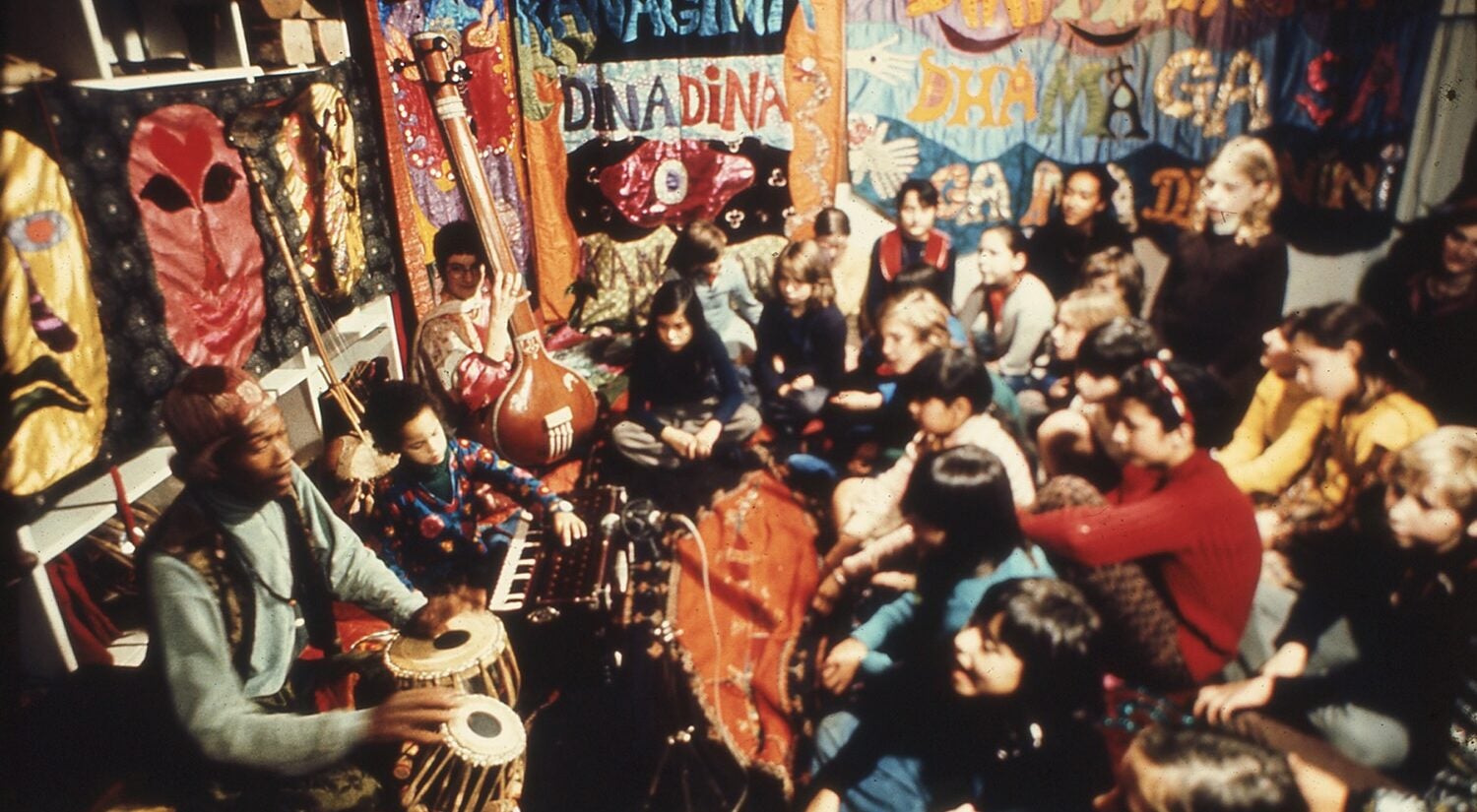
The work on view is primarily textile art, including many banners Moki made for the performances she and Don Cherry performed together. Called “Organic Music,” the couple tried to break down barriers between the audience and the artist and make collaborative musical experiences that incorporated children and family life.
The banners were used as theatrical adornments to foster audience interaction. Many depict Hindu figures. Don and Moki incorporated Indian musical styles, such as ragas, into their collaborations. On “Brown Rice,” an album for which Moki designed the sleeve art, she can be heard performing the stringed tanpura.
“They developed these extraordinary spaces that were like audio-visual happenings,” said curator Mark Christman, whose jazz and new music company Ars Nova Workshop brought the exhibition to the Fabric Museum.
“They supported a communal creative expression across languages, across borders, across communities and ages and abilities and ideas,” he said.
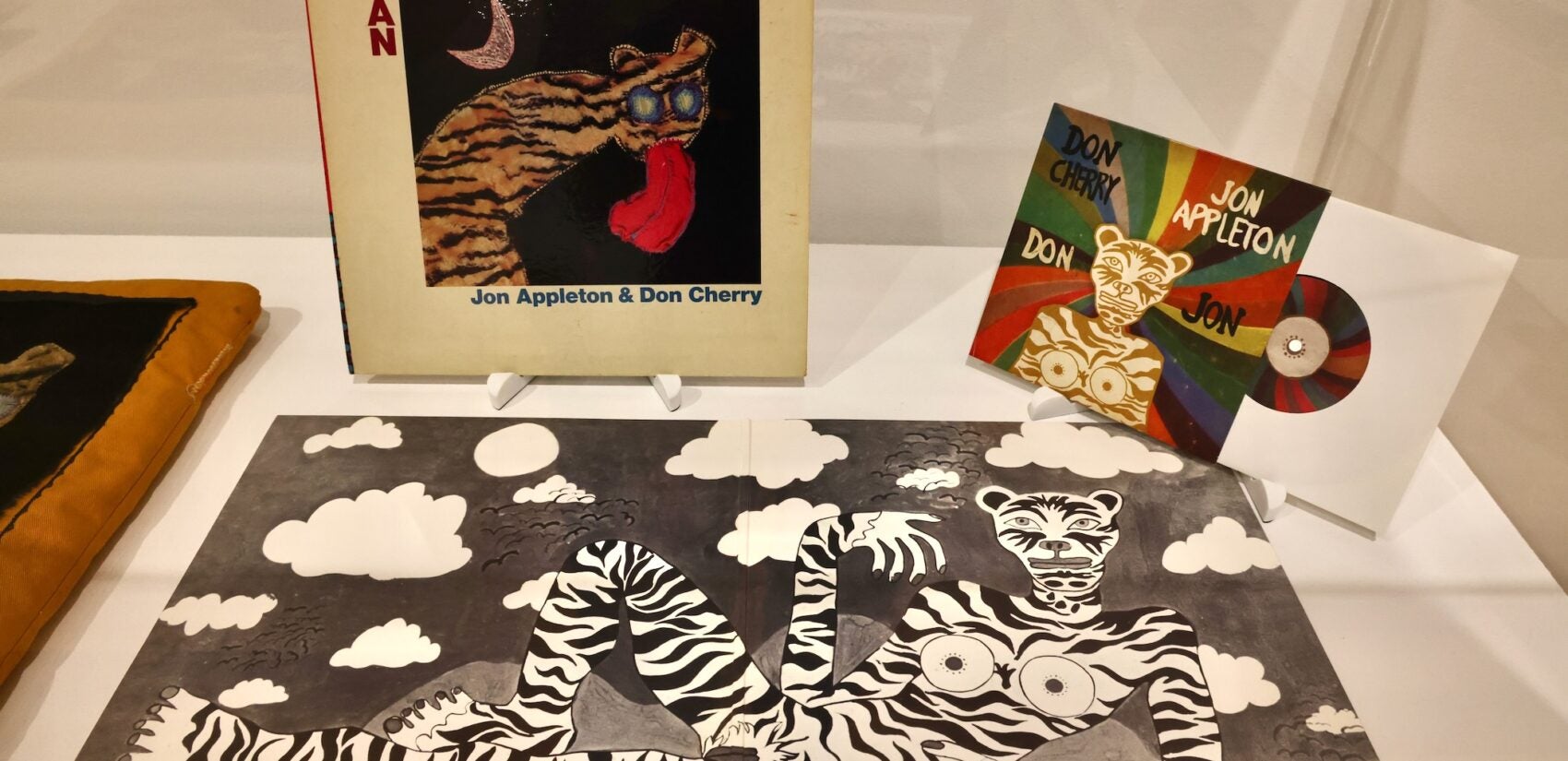
One of the banners depicts Malkauns, a traditional Indian raga the Cherrys perform on “Brown Rice.” The letters spell out vocalization of the raga’s pentatonic scale, akin to the western “Do Re Me” from “The Sound of Music.”
“At the time when she was making them and wanted her work to be shown in galleries, especially during the ‘70s, the art world at the time didn’t understand it,” said Naima Karlsson, Nenah’s daughter and manager of her grandmother’s estate.
“They didn’t think a tapestry piece was real art. It was more like women’s crafts. She was very much interested in these traditional art forms and finding ways of expressing that in her contemporary time,” she added.
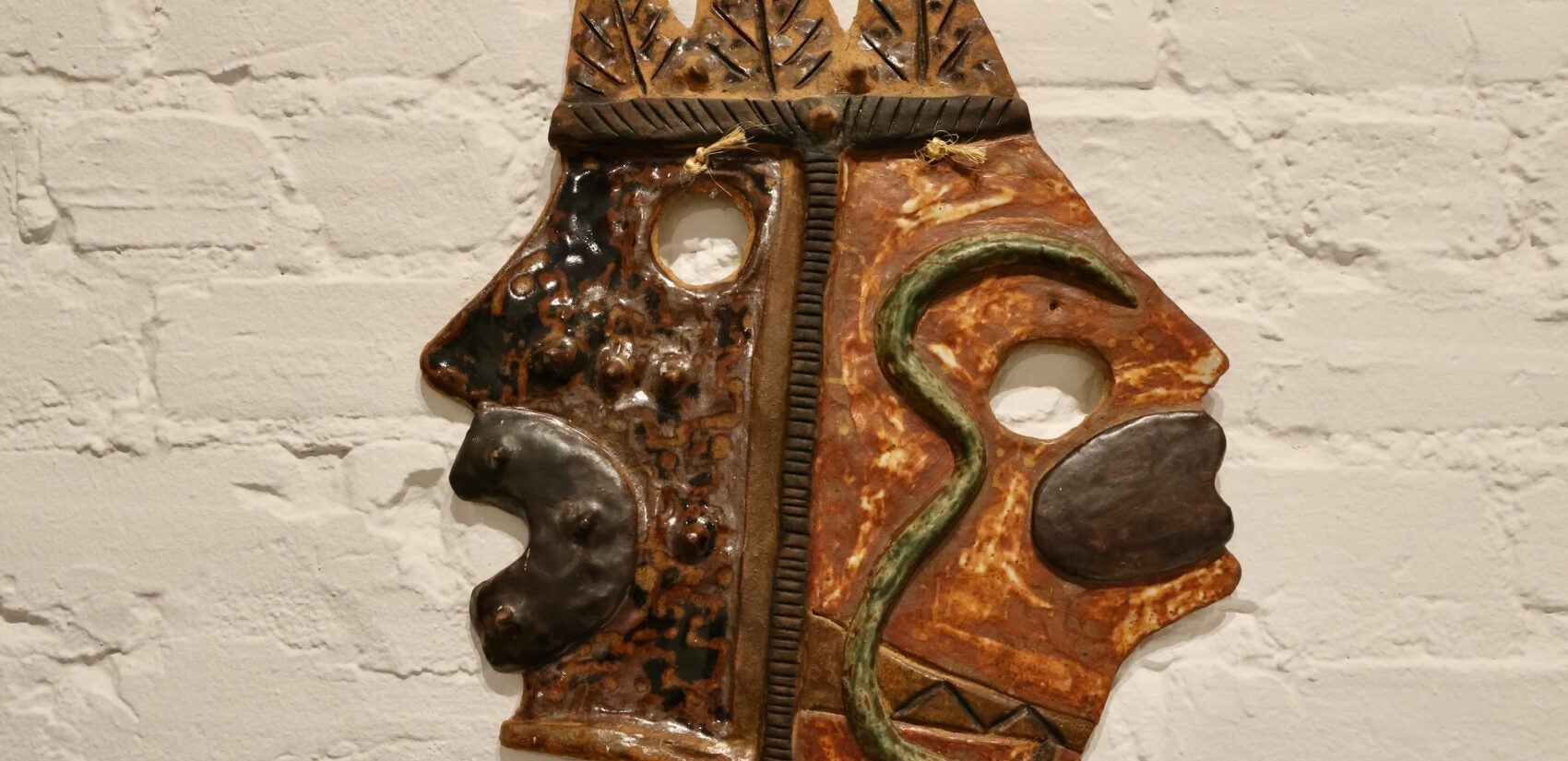
Moki had an active art practice until her death in 2009. In her later years, she split her time between New York and a schoolhouse in Sweden that she had converted into a home and studio.
Neneh, who published a memoir last year, said the family has kept the house in Sweden as a family retreat, where creative experimentation and domestic tranquility coexist.
“As happy as it makes me, it also makes me feel a bit sad that she isn’t here. Even though she is here. We can feel her so much in the room,” Neneh said while at the Fabric Workshop and Museum. “There’s no doubt that the life force is in the art. It’s so expressive and timeless and feels like the world is only catching up now.”
“The Living Temple: The World of Moki Cherry” is at the Fabric Workshop and Museum until April 12, 2026.

Get daily updates from WHYY News!
WHYY is your source for fact-based, in-depth journalism and information. As a nonprofit organization, we rely on financial support from readers like you. Please give today.
